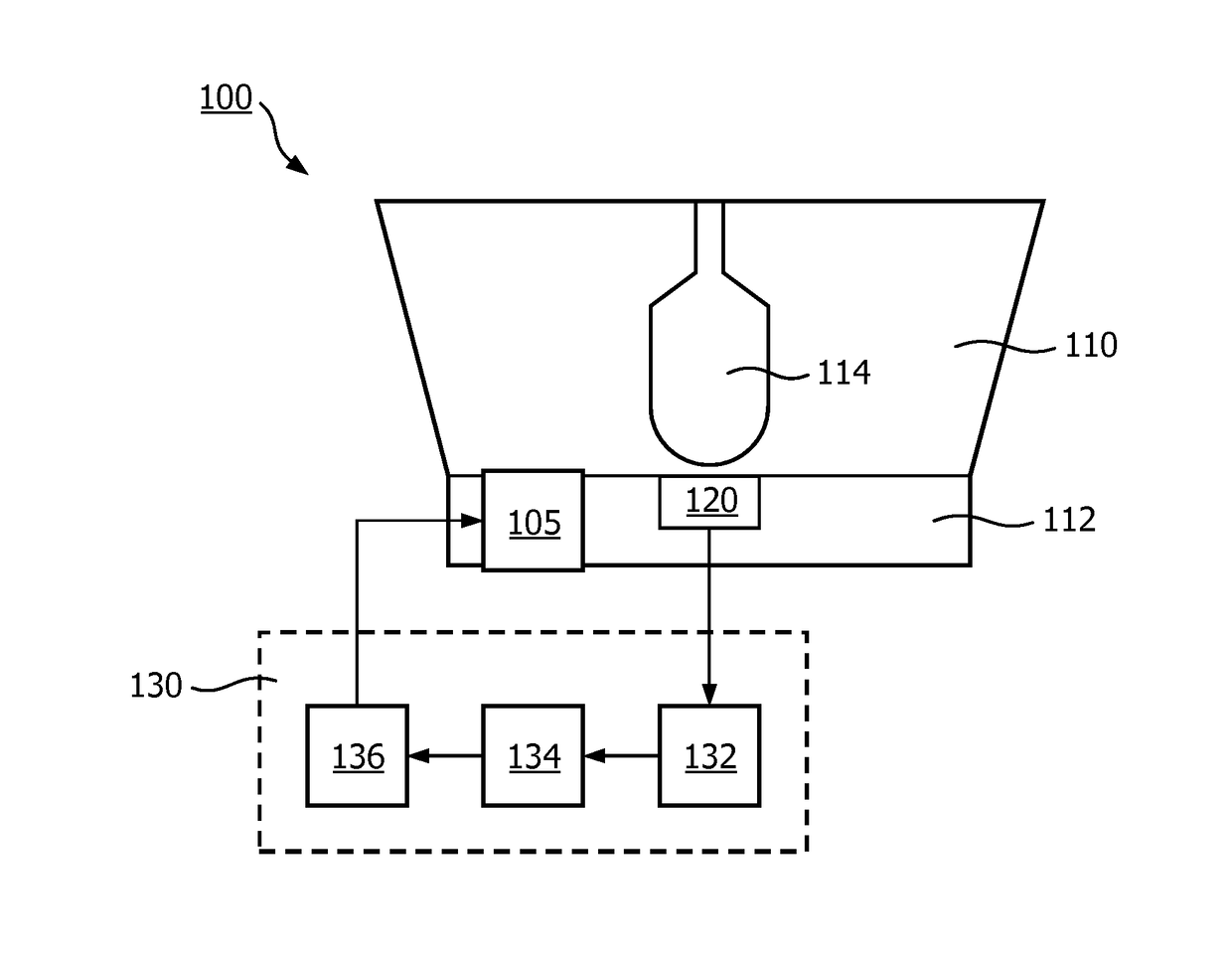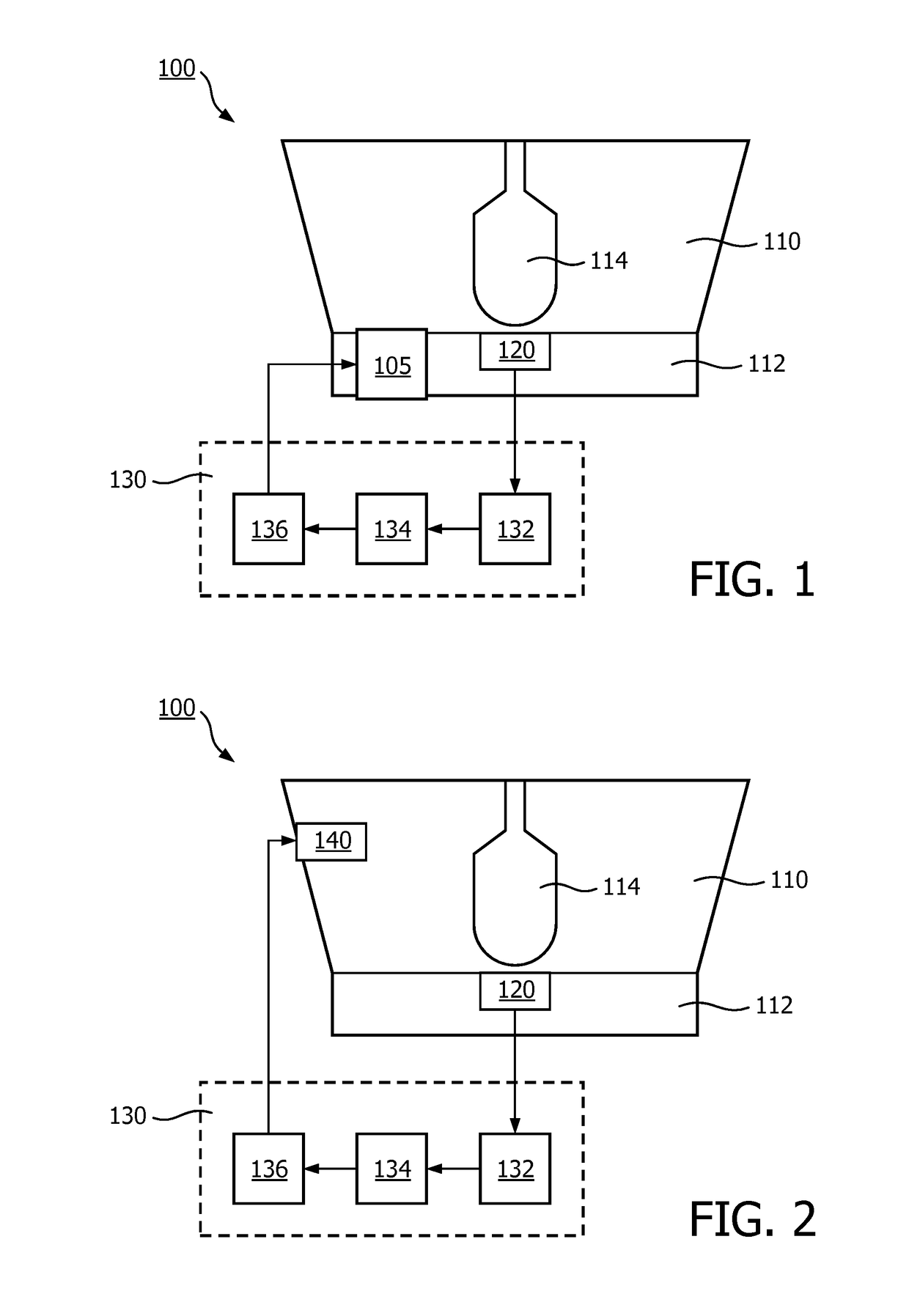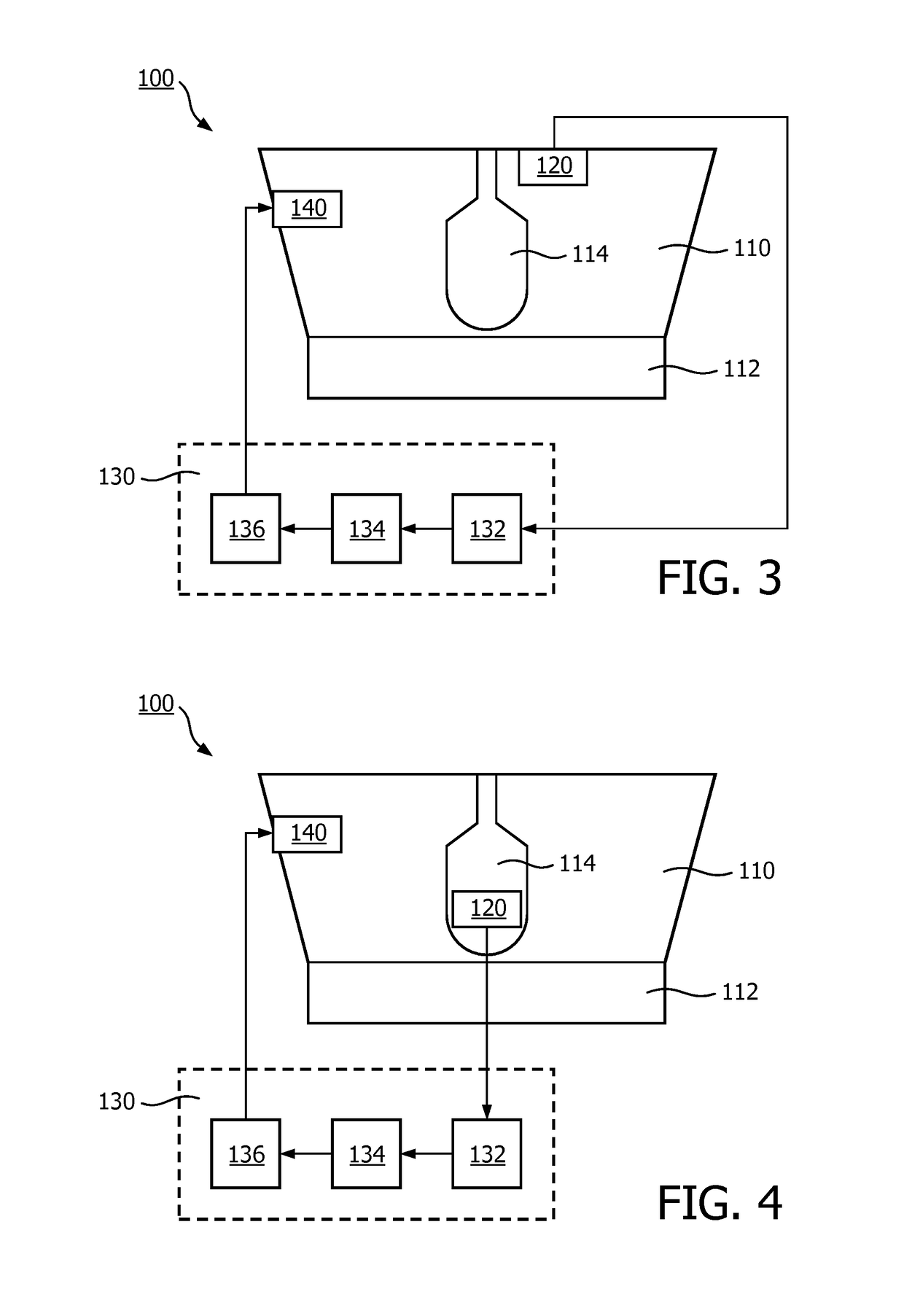Kitchen appliance and method
a technology for kitchen appliances and methods, applied in the field of kitchen appliances, can solve the problems of inconsistent food products, unsatisfactory food products, unsatisfactory texture, etc., and achieve the effect of accurately controlling the preparation process and facilitating the preparation
- Summary
- Abstract
- Description
- Claims
- Application Information
AI Technical Summary
Benefits of technology
Problems solved by technology
Method used
Image
Examples
example 1
oisture Determination in Flour
[0075]Flour samples were obtained from a local supplier, and stored at room temperature (about 21° C.). The initial moisture of each flour sample was measured using a moisture analyser (Halogen HR83) and determined to be 13.02 wt % of the total weight of the flour. To each sample, 1 wt % water was added using a humidifier. This was done three times, after which 5 wt % water was added to the flour samples.
[0076]The dielectric properties of the flour samples were measured at different frequencies using a dielectric sensing system on top of the flour samples. As the dielectric sensor, an open-ended coaxial probe consisting of a coaxial line with a male SMA (small A type) connector and a soldered SMA panel jack with a flange (RS Components Ltd.) was used. The probe was kept stationary and in intimate contact with the flour samples. A vector network analyser (VNA, Agilent E5071C) was used as the signal generator and receiver. S11 was measured prior to and af...
example 2
nd Controlling Moisture Content in Dough
[0079]Flour samples were obtained from a local supplier, and stored at room temperature (about 21° C.). A dough maker from Murenking is used to stir and knead the dough. Initially, 30 wt % water was added into the flour and mixed for 5 min and 8 measurements of S11 were taken at regular intervals using the dielectric sensor setup described in Example 1 to obtain an indication of the average moisture content of the dough. Subsequently, 2 wt % water was added and mixed for 3 min each time and 8 measurements of S11 were taken at regular intervals for the reasons given above. This was repeated 4 times.
[0080]FIG. 11 shows the averaged logarithmic spectra of S11. As the moisture content of the dough increases, the magnitude of S11 drops accordingly. FIG. 12 shows S11 determined at a probe frequency of 5.8 GHz as a function of the dough moisture, i.e. the percentage of water in the overall dough mixture by weight. It can be seen that the changes to S...
example 3
ng Gelatinization in Starch-Rich Foods
[0085]Flour samples were obtained from a local supplier, and mixed with water at a ratio of 2:1 by weight to form wet dough. The dielectric sensor as described in detail in Example 1 was used for dielectric measurements. The RF probe and a thermal probe were inserted into the dough to monitor the dielectric properties and temperature. The dough was wrapped with plastic to keep the flour-water ratio reasonably constant.
[0086]Both the amplitude and the phase of S11 were recorded indicating the dielectric property change due to temperature or gelatinization. Since the dielectric properties of the dough are a function of temperature, a water bath was employed to control the heating curve of the dough. The temperature was brought to 55° C. (below the gelatinization temperature) and kept constant for 25 min, and after the temperature was increased to 75° C. (above the gelatinization temperature) and kept constant for another 25 min. FIG. 13 shows the ...
PUM
 Login to View More
Login to View More Abstract
Description
Claims
Application Information
 Login to View More
Login to View More - Generate Ideas
- Intellectual Property
- Life Sciences
- Materials
- Tech Scout
- Unparalleled Data Quality
- Higher Quality Content
- 60% Fewer Hallucinations
Browse by: Latest US Patents, China's latest patents, Technical Efficacy Thesaurus, Application Domain, Technology Topic, Popular Technical Reports.
© 2025 PatSnap. All rights reserved.Legal|Privacy policy|Modern Slavery Act Transparency Statement|Sitemap|About US| Contact US: help@patsnap.com



